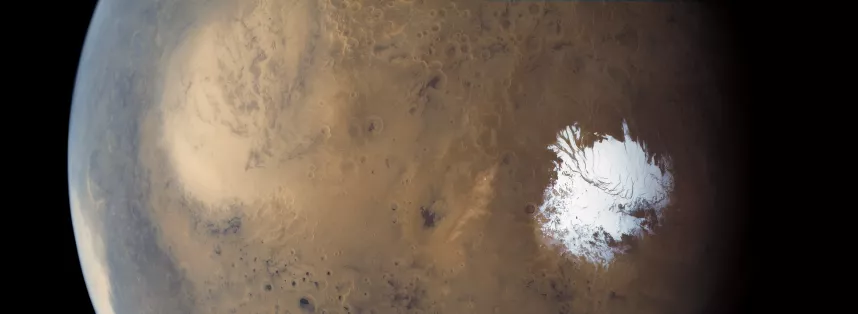New water reservoir discovered on Mars
October 14, 2020
An international team of scientists, under participation of Jacobs University Bremen, has found evidence for the existence of several subsurface water bodies hidden under the south polar cap of Mars. Liquid water is the prerequisite for life. In a study now published in the journal "Nature Astronomy", the scientists report on their discovery.
The researchers analyzed data from the MARSIS radar unit on board of ESA's Mars Express orbiter. Its radar waves penetrate the 1.5-kilometer-thick ice layer of Mars’ south pole and are partially reflected by the layers below. In the process, a large lake was discovered, which is surrounded by several smaller bodies of liquid water. These lakes might be inhospitable to life, but it cannot be excluded that they retain traces of life forms from the time when Mars, like the early Earth, still had a dense atmosphere and a milder climate.
Already in 2018, a team led by Professor Roberto Orosei from the National Institute of Astrophysics in Bologna discovered a large reservoir of liquid, highly saline water underneath the ice of the south pole of Mars. The high concentration of salt acts like an antifreeze, lowering the freezing point of the water. It remains liquid, despite estimated temperatures of minus 68 degrees Celsius.
The researchers used both new and older data for their study. “It is a prime example of how new research methods can also be used to gain new insights from older planetary missions," emphasized Angelo Pio Rossi. The Professor of Earth and Planetary Science at Jacobs University was involved in the analysis of the data and its geological interpretation. “Further research is needed to better understand the climate history of Mars,” he added. "Such water bodies could also exist in other regions of Mars’ polar caps," said Rossi. Three missions to the red planet are currently underway.
